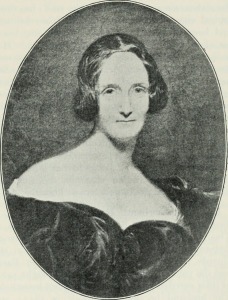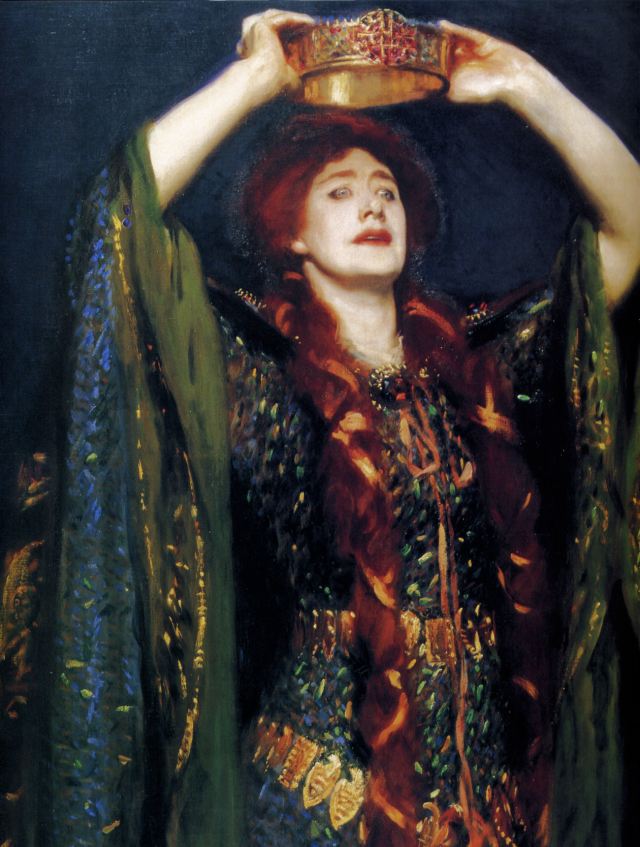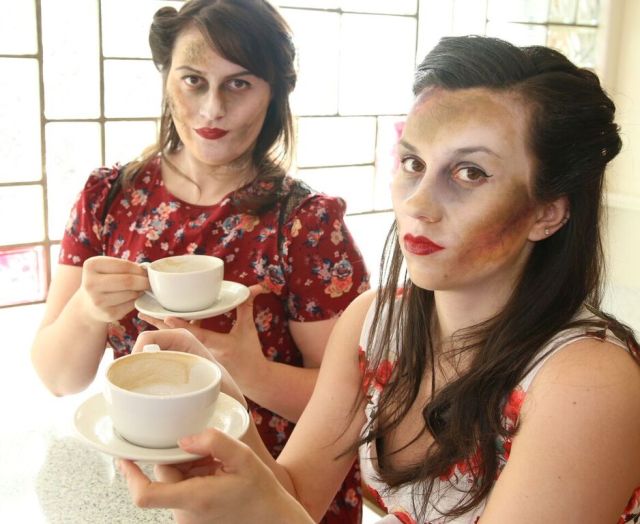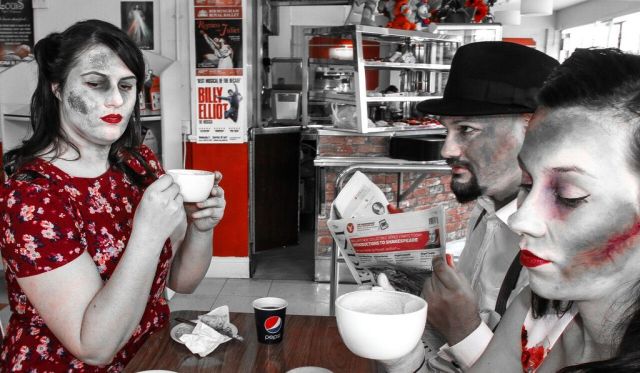We welcome back, Olivia Metcalfe, who writes about the ‘taboo’ of Tom Hardy’s latest television character; discussing monstrosity and the Byronic Hero. Olivia graduated with a BA Honours in English Language and Literature, and most recently, with an MA in English Studies.
Douglas (2014) recalls that Lady Caroline Lamb once described Lord Byron as ‘mad, bad and dangerous to know’ (p.343) this can also be applied to the character of James Delaney. Both men share remarkable similarities that define them as the Byronic hero. These include: high level of intelligence, sophistication and social and sexual dominance. They also possess an air of mystery and charisma allowing them to breeze through the society that they hold such distaste for.
Forina (2014, p.2) states that:
The Byronic hero is typically identified by unflattering albeit alluring features and an arrogant although intelligent personality. This character is usually an anti-hero who has committed a great crime for which he may feel guilt, but for which he has not repented as he feels he is above societal and spiritual law
Ultimately, the Byronic Hero is a beautiful outcast, one with inner demons and a turbulent past, correct, but he can express himself articulately, possessing the ability to flourish in society. The Byronic Hero does not choose this, for he longs for solitude and endangers his own life with his self-destructive behaviour. However, to understand the Byronic hero we must understand what it means to be considered as taboo. The Oxford English Dictionary defines the term ‘Taboo’ as: “A practise that is prohibited or restricted by social or religious custom”. (taboo, 2017)
It is certain that in Regency England the character of the Byronic Hero was held with distaste and even disgust, in civilised society. He surpassed customs that were held as sacred law for aristocrats and the upper class. These customs such as to distain oneself from the opposite sex until marriage, to respect King and country and to be a law abiding citizen, were turned on blind ears to the Byronic Hero. Underneath the crisp front, Regency England was a place of darkness and corruption, one that favoured the patriarchy and left the lower classes in squalor and disease. The character of the Byronic Hero offers a sense of justice and integrity to a world that closes its ears to the screams of its country men.
In this segment of my piece I will discuss how James Keziah Delaney is first an abhorrent man with no moralistic values, closer to that of a beast than a man. This part will describe how James Delaney can be seen as taboo.
There are many examples in which Delaney disrupts societal values in order to pave his own fortune and pleasure. He rejects the life of an English gentleman and lives in Africa for twelve years. In a society that legalises slavery and reduces people in the eyes of the British law, to possessions or animals, it is taboo that Delaney associates himself with this culture. This causes him to become ostracised in civilised society; he is seen as a savage. Zilpha – his sister – asks if he really ate flesh in Africa, and the audience realise there is some grain of truth in this statement which is illustrated in his behaviour in episode two, when he uses his teeth to rip away an assassin’s neck. He is a beast who appears to have no morality, presenting danger and death to those who approach him
Not only does he return from Africa with new values and stolen diamonds, but also witchcraft. We see many examples of this throughout the series. Delaney can communicate with the dead and has visions and hallucinations from past events. We are often presented with the dream like memory of his Native American mother who his magic is inherited from; her painted face and expressions are rather terrifying for the audience. The disturbing ‘savage’ representation that is presented to the audience is how the white Europeans of Regent England would envision Native Americans to be. They did not understand their culture, their ways, and their magic; so set to demonise it. We question who the real monsters are when we find that his mother was bought by Delaney’s father as a wife, imprisoned in a claustrophobic room, then sent to Bedlam for rebelling against her English husband. This perhaps may be why Delaney rejects his father and English society, in order to preserve his mother’s memory and her magic.
This magic is used for sinister devices to ‘visit his sister in her dreams’. He approaches Zilpha in episode four to admit his crimes.
Delaney: You feel me, don’t you when I break in?
Zilpha: No
Delaney: Yes, you do. You feel me. And I could come more often but I spare you.
(“Episode Four”. Taboo, 2017)
We wonder the extent of his powers when he states, ‘I spare you’. What is Delaney truly capable of? In some societies – including British – the ultimate taboo is to lay with one’s own blood; with one’s sister. Delaney does this by entering, pursuing, and reinstating a sexual relationship with his half-sister Zilpha Geary. In some scenes we wonder whether the relationship was wholly consensual as Zilpha attempts to reject his advances. He sexually assaults her in her dreams with his strange magic, as a result of this. Her husband watches this display then abuses Zilpha himself. Unfortunately in 1818 women had few rights and were unable to fight against the oppressive patriarchal society. Women such as Zilpha were at the mercy of the men in their lives. We applaud her bravery in episode seven where she kills the deserving and deplorable, Thorne Geary, her abusive husband. She runs to James in episode six to tell him of her crime “I killed him. Just like you said” she whispers kissing him. (“Episode Seven” Taboo, 2017) Delaney is confused and horrified. The audience question what demonic entity had possessed Zilpha to kill Thorne, as Delaney did not.
We may critique Delaney’s character; he is a despicable creature, one who commits carnal acts with no thought or remorse. However, I would like to present the argument that he represents a Byronic hero fighting against injustice in a cruel society. To question this we must assess how his wrong doings in society are simply archaic judgments of a condescending time.
Although the act of incest disgusts and horrifies most viewers, it is an act ingrained in all of us from a young age that is deplorable and wrong. Rapf, however offers an interesting argument and gives us insight in to Delaney’s character. Rapf discusses the notion of incest:
In itself, there is no reason why this incestuous love should not be as intense, as creatively fulfilling as non-incestuous love. But in the eyes of society it is an “incorrect thing,” and impure, and as with any taboo, indulgence in it often results from a confused mixture of social defiance and self-degradation. (1981, p.643)
Delaney seemingly saves Zilpha from an abusive marriage, his love gives Zilpha the strength to destroy her husband and return to her true love. The lust and longing between both Zilpha and Delaney is electrifying, Zilpha knowing their love is forbidden attempts to push her brother away, but to no avail. She herself seduces Delaney – this is clear when both are seen alone in the church and Zilpha mounts her brother, initiates sexual intercourse and then pulls away. (“Episode Seven” Taboo, 2017) She teases him as they both enjoy the thrill of the forbidden. By saving Zilpha he is the gallant Byronic hero rescuing his damsel from not only her monstrous husband, but from a monstrous society. Like many formidable creatures Delaney is simply a product of an intolerant society. He is labelled as different, dangerous, and a demon. An ‘African Devil’ he is pronounced, by young Winter, also in episode seven, but it is through his embracement of this title, his rebellious nature and his dark charm, that make James Keziah Delaney, a true Byronic hero.
References
Taboo. Oxford English Dictionary. OED Online. Oxford University Press. 18.2.2017. <http://dictionary.oed.com/>
Forina, M. (2014). ‘Edward Rochester: A New Byronic Hero’. Undergraduate Review. Bridgewater State University. Available at: http://vc.bridgew.edu/undergrad_rev/vol10/iss1/19
Rapf, J. (1981) ‘The Byronic Heroine: Incest and the Creative Process’ Rice University
Available at: http://www.jstor.org/stable/450231
Accessed: 13-02-2017 21:08 UTC
Douglass, P. (2004). Lady Caroline Lamb: A Biography. Palgrave Macmillan
“Episode Four”. Taboo. FX. 28th January 2017. Television.
“Episode Six” Taboo. FX. 11th February 2017. Television.
“Episode Seven” Taboo. FX. 11th February 2017. Television.




